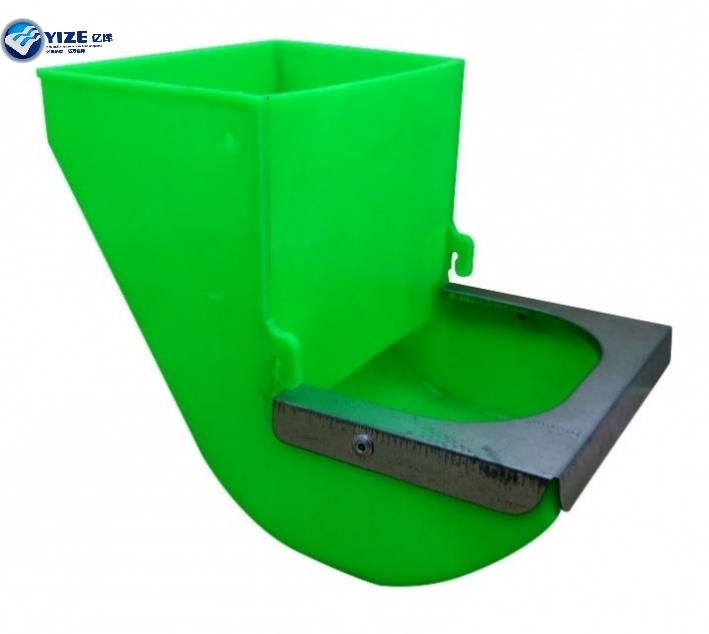Efficient Fish Feed Pellet Production Machine for Optimal Aquaculture Nutrition
វិច្ឆិកា . 04, 2024 11:50 Back to list
Efficient Fish Feed Pellet Production Machine for Optimal Aquaculture Nutrition
The Importance of Fish Feed Pelleting Machines in Aquaculture
The aquaculture industry has witnessed significant growth over the past few decades, driven by the increasing global demand for fish and seafood. To meet this demand, efficient and high-quality fish feed production becomes crucial. Fish feed pelleting machines play a pivotal role in transforming raw ingredients into palatable and nutritionally balanced pellets that support the health and growth of aquatic species.
Understanding Fish Feed Pelleting Machines
Fish feed pelleting machines are specialized devices designed to convert a mixture of feed ingredients—such as fishmeal, soy protein, corn, wheat, and various vitamins and minerals—into uniform pellets. The pelleting process involves several stages, including grinding, mixing, conditioning, and conditioning, followed by extrusion or pelletizing.
The grinding stage involves reducing the particle size of raw materials to ensure uniformity in the feed. Following grinding, the ingredients are mixed thoroughly to create a balanced formulation. The conditioning process involves adding moisture and heat to the mixture, which helps in gelatinizing starches and enhancing the digestibility of the feed. Finally, the mixed feed undergoes pelleting through a die that shapes the feed into pellets.
Benefits of Using Pelleted Fish Feed
Pelleted fish feed offers numerous advantages over traditional loose feeds. The uniform size and shape of pellets ensure that every fish receives the exact amount of nutrients required for optimal growth. This consistency minimizes waste and uneaten feed, contributing to a cleaner aquatic environment.
Moreover, pelleting improves feed conversion ratios, meaning fish can convert feed into body mass more efficiently. This efficiency results in lower feeding costs and shorter production cycles, enhancing the overall sustainability of aquaculture operations. Additionally, pelleted feeds can be customized to meet the specific nutritional needs of various fish species, whether they are carnivorous or herbivorous.
fish feed pelleting machine

Technological Advancements in Pelleting Machines
The development of fish feed pelleting machines has evolved significantly, incorporating modern technology to enhance performance and efficiency. Advanced machines are now equipped with features such as variable speed control, automatic weighing and mixing systems, and temperature monitoring devices. These innovations improve the uniformity of the feed and ensure that it is produced consistently.
Moreover, the introduction of extruders has revolutionized feed production. Extrusion cooking helps expand the feed and improve its digestibility, making it more attractive to fish. This technology also allows manufacturers to produce floating or sinking pellets based on specific requirements, catering to different feeding habits of aquatic species.
Environmental Considerations
As aquaculture expands, it is essential to address environmental concerns related to feed production. Fish feed pelleting machines can contribute to sustainable practices by facilitating the use of alternative protein sources, such as insect meal or algae. These alternatives reduce the dependence on traditional fishmeal, which can be overfished, ensuring a more sustainable supply chain.
Additionally, by enhancing feed efficiency and reducing waste, pelleting technology helps minimize the ecological footprint of aquaculture operations, promoting a healthier aquatic ecosystem.
Conclusion
In conclusion, fish feed pelleting machines are indispensable in the modern aquaculture sector. They not only enhance the efficiency of feed production but also contribute to the health and sustainability of aquatic farming. As the industry continues to grow, embracing innovative technology and sustainable practices will be key to meeting the increasing demand for fish while preserving our aquatic resources. Investing in high-quality pelleting machines can lead to better production outcomes and a more efficient aquaculture industry, ultimately benefiting both producers and consumers.
-
High Performance Exhaust Fan – Efficient Ventilation Solutions for Home
NewsJun.10,2025
-
High-Quality Gestation Pen for Sows Durable Mobile Pig Pen & Simple Pig Pen Solutions
NewsJun.10,2025
-
High Quality Rabbit Cage Double Tier Designs & Welded Wire Mesh Supplier
NewsJun.10,2025
-
Floating Fish Feed Machine - High Efficiency Floating Fish Feed Extruder for Small Scale Production
NewsJun.10,2025
-
Premium Poultry Housing Solutions Mobile & Commercial Free Range Options
NewsJun.10,2025
-
Industrial FRP Fans Corrosion-Resistant Blades & Centrifugal Systems
NewsJun.09,2025






